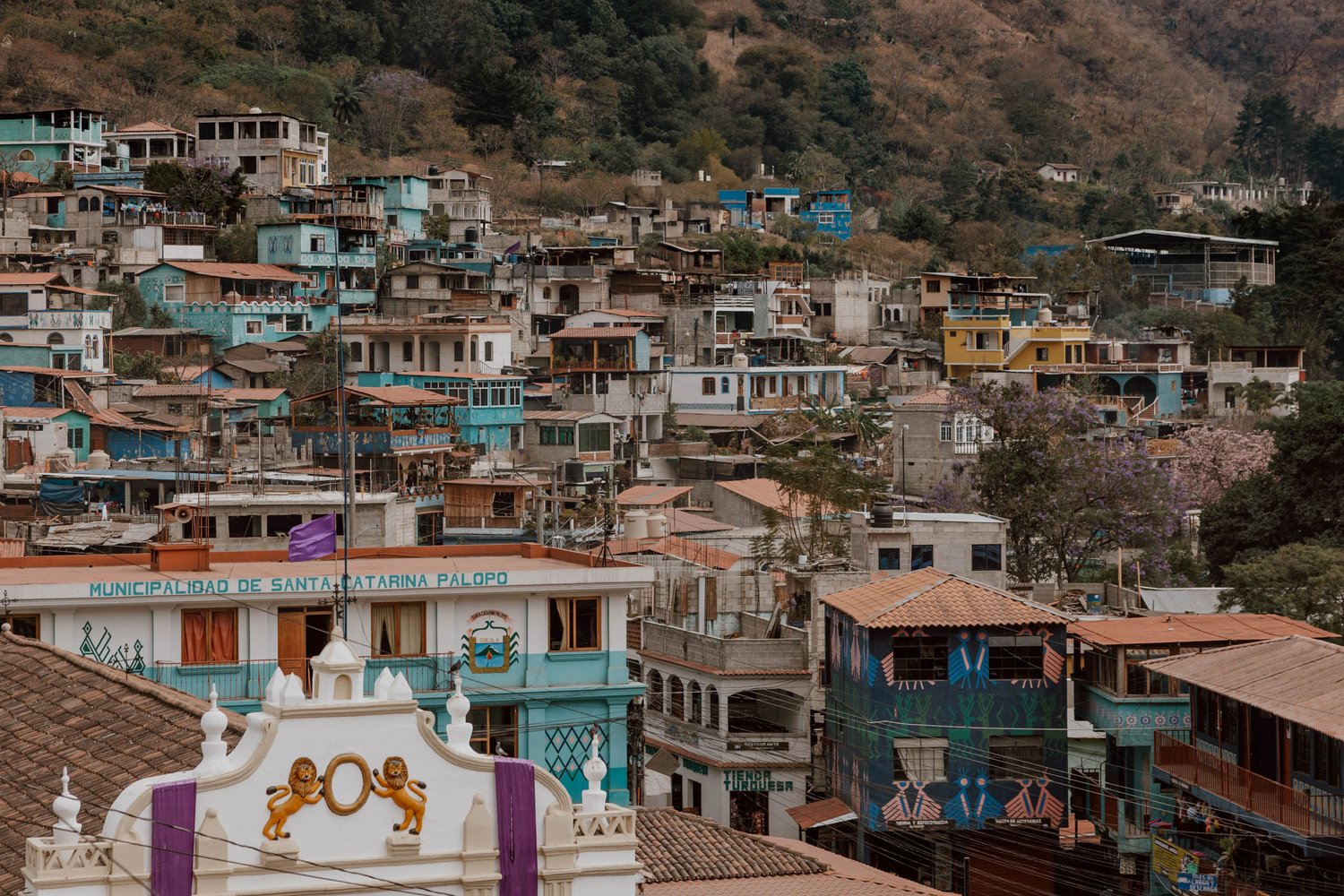In 2016, Asociación Pintando el Cambio, a local non-profit spearheaded by Melissa Whitebeck and her uncle Harris Whitebeck (wealthy Guatemalans with connections to the lake), embarked on an ambitious project to reimagine Santa Catarina as not only a place to visit, but a living canvas. Their vision was to transform the town into an open-air gallery, where every building would tell a story, drawing inspiration from the traditions, symbols, and natural beauty of the Maya culture.
It was a bold move, inspired in part by Brazil’s famous painted favelas, but with a uniquely Guatemalan twist.
To ensure sensitivity and inclusion of the local community, the Whitebeck family partnered with the Dutch artists Jeroen Koolhaas and Dre Urhahn – famous for their work in Brazil’s favelas – to study the Mayan Kaqchikel culture and project their traditional designs outside of their woven fabrics (the huipil, the traditional Maya blouse, becoming the literal blueprint for the murals).
Blue, in all its shades, dominated – a homage to the lake and shade the local women wear – while motifs of maize, quetzals, and volcanoes paid tribute to the culture and landscape that have defined the lives of the people here for centuries.
Now, it might sound as though all of this was an external cultural imposition on the local indigenous population, who may have been quite content with how things looked and how things were.
But far from being passive participants, those who live here became co-creators, selecting designs for their homes and working shoulder to shoulder with professional artists. This wasn’t just art for art’s sake; it was an act of reclamation, a collective statement of pride and resilience for the indigenous Kaqchikel community.
850 houses later, and the impact of Pintando Santa Catarina has been nothing short of transformative.
Tourism surged, with people drawn not just to the murals but also to the story behind the artistic reinvention. This introduction of visitors has stabilised or boosted the incomes of local artisans and businesses, while some improvements to infrastructure – such as better water systems, schools and communal spaces – have followed.
In an age of overtourism and identity crises, it is genuinely refreshing to see where the green shoots are not just welcomed, but viewed as having a net positive impact.
Click Here to Read the Full Original Article at blog…
